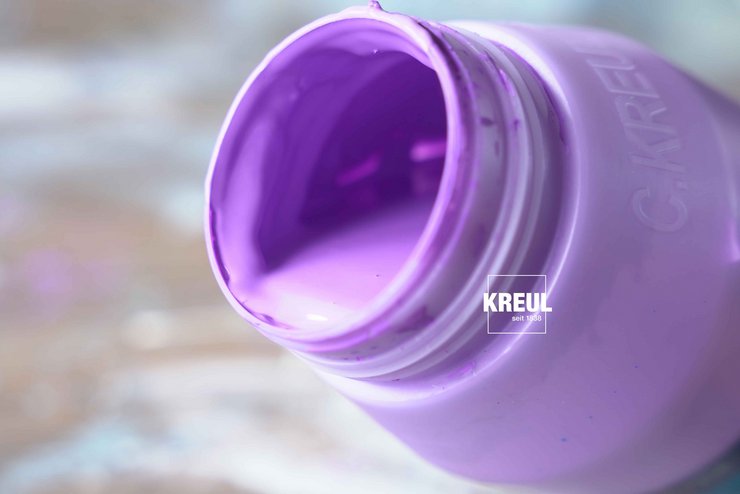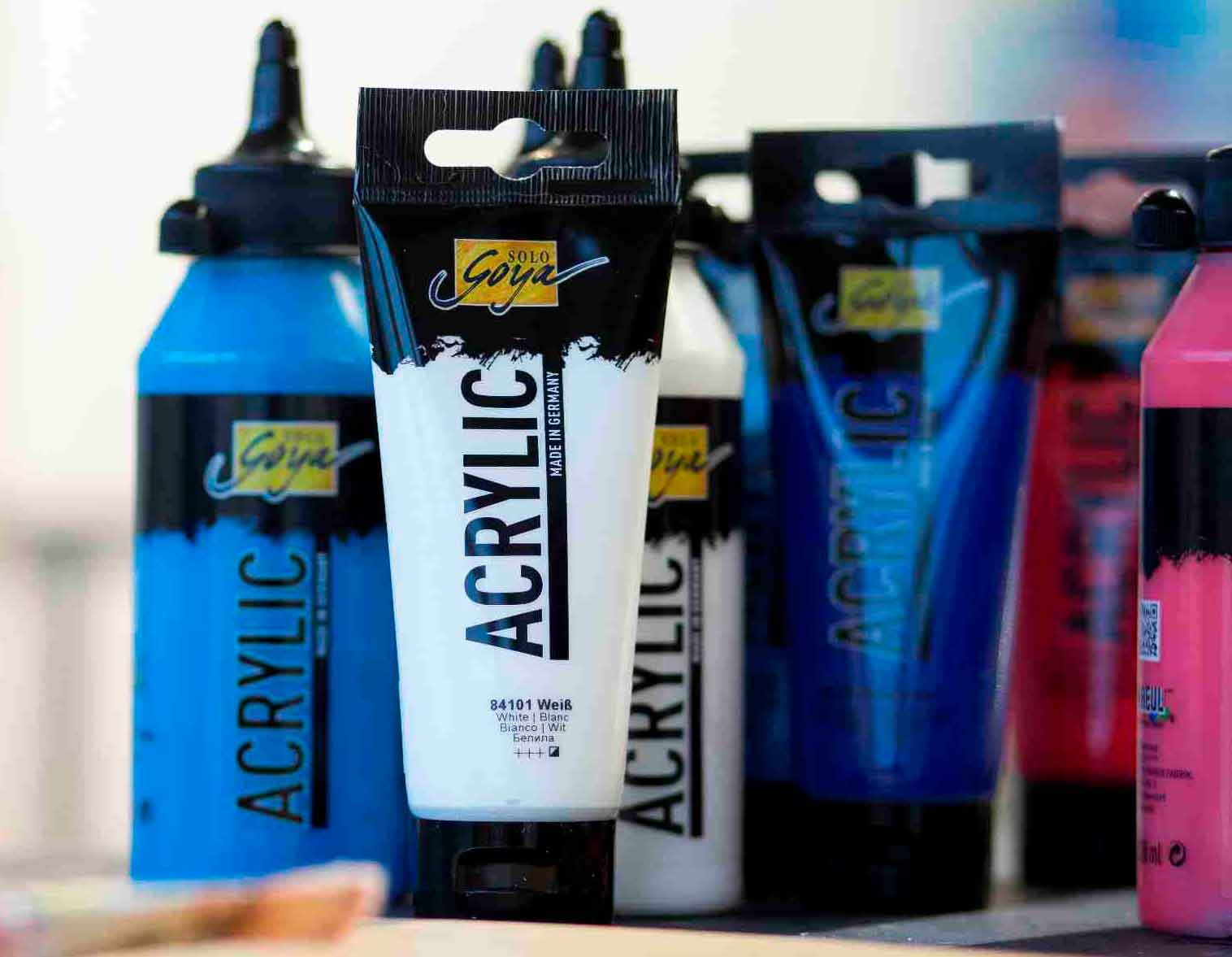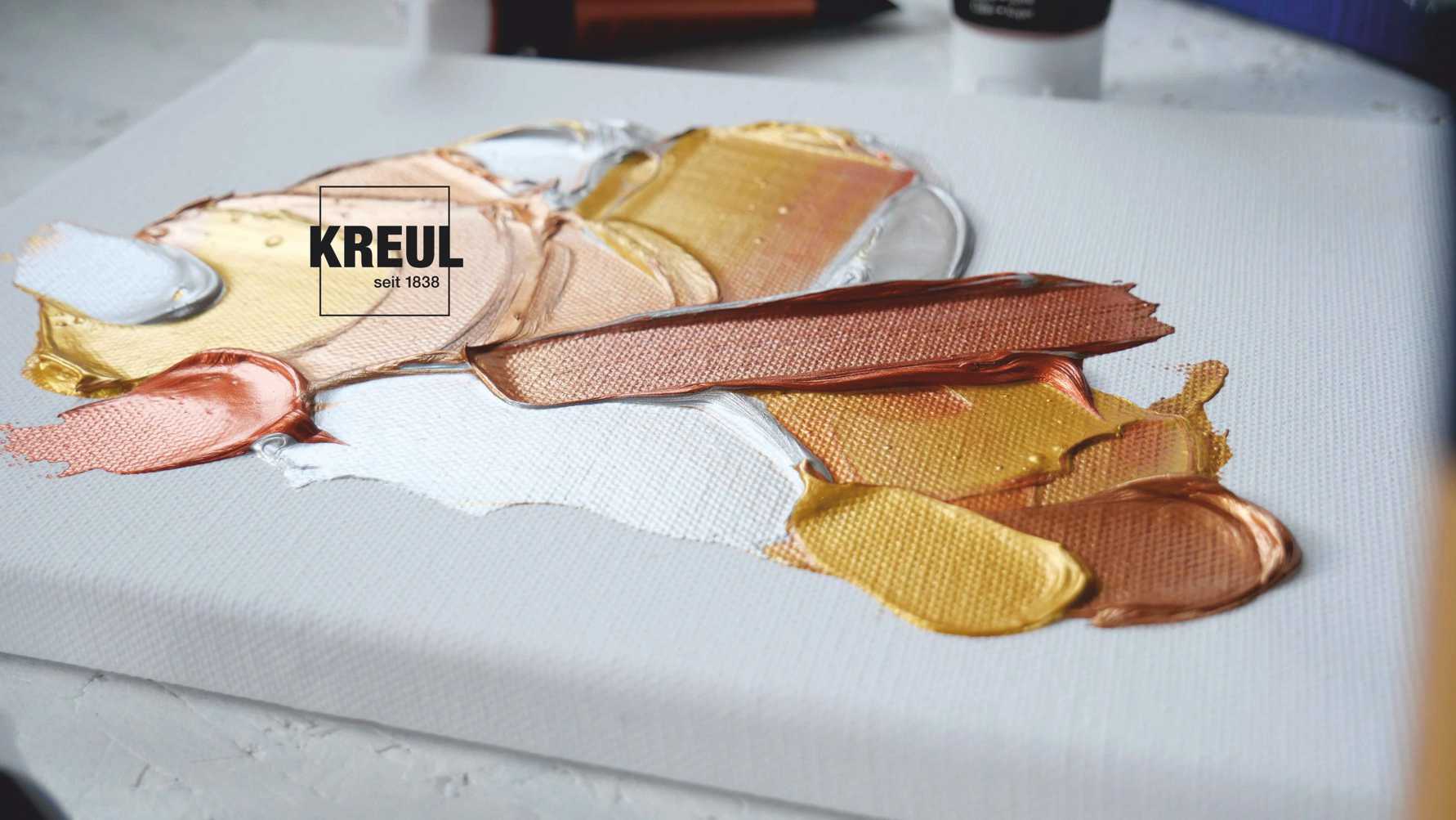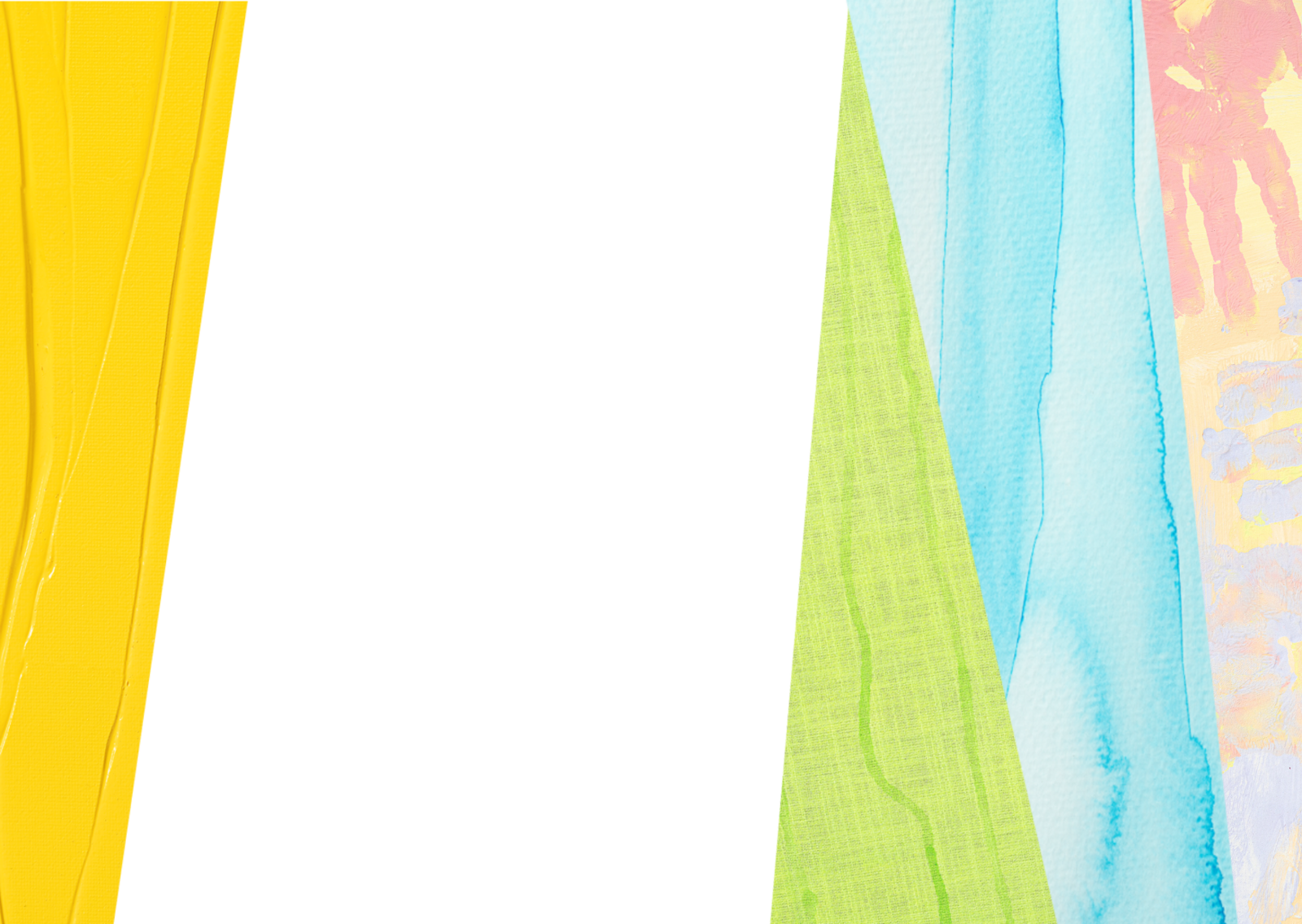
KREUL Colour Knowledge: what are the special features of artists' acrylic paints?
10/25/2021 |- SOLO GOYA Acrylic
- KREUL el Greco Acrylic
- KREUL Triton Acrylic Liquid
- Ideen für Künstler

Our artists' acrylic paints consist of a binder, water as a solvent and pigments. We use polymer dispersions as binders. They bind the pigments together and cause the subsequent film formation on the painting surface. When the binder dries, the water that it contains evaporates. The plastic building blocks fuse together to form a water-insoluble film, which is why artists' acrylic paint is waterproof. Initially, the binder is milky and becomes transparent as it dries. For this reason, acrylic paints appear a shade more colour-intensive after drying than when fresh from the tube.

What makes colours shine wonderfully are their colouring substances, the pigments. They are largely produced synthetically, but are also obtained from neutral raw materials. Which pigment determines the colour shade can sometimes be seen in the colour shade designation. For example, the colour vermilion used to contain the pigment cinnabar and that is how it got its name. However, some original pigments are not harmless in use. Therefore, we resort to synthetically produced pigments that are based on the original pigment. KREUL, for example, deliberately avoids using real cadmium pigments. The SOLO GOYA Triton Acrylic Cadmium Yellow, for example, contains a synthetic substitute pigment. Our artists' acrylic paints can be mixed with each other. So-called single pigment colours give the best result when mixed. They consist of one pigment only. If you mix two single pigment colours, you get the purest, most unclouded secondary colours. In the SOLO GOYA Triton Acrylic, for example, the shades of real orange, cherry red, cobalt blue, ultramarine blue, oxide red and black each have only one pigment. But it is not always easy to mix colours yourself. With the SOLO GOYA Triton Acrylic, SOLO GOYA Acrylic and the KREUL el Greco Acrylic, we therefore offer an extensive colour palette, with finely nuanced shades such as leaf green or light blue.

Typical for artists' acrylic paints are the different opacity values. These result from the pigments they contain. We distinguish between opaque, semi-opaque, translucent and semi-lucent opacity values. Opaque colours such as the SOLO GOYA Triton Acrylic Dark Blue do not allow the painting ground to show through. White is semi-opaque with the SOLO GOYA Acrylic, so the lower layers of paint remain partially visible. Glazing colours such as the SOLO GOYA Triton Acrylic Lemon are transparent. Ideal for covering certain areas with a touch of yellow. In the glazing technique, several transparent layers of paint are layered on top of each other and create wonderful colour mixtures on the picture support.

We think self-painted acrylic artworks should be presented. But sunlight can cause colours to fade. The light fastness describes how constant colours are under prolonged illumination. This is also dependent on the pigments contained. We have indicated the light fastness for each shade individually and printed it on the respective container. Together with the opacity values, they can be found on the front of the products, in the case of the SOLO GOYA Triton Acrylic on the lid spot. Three stars stand for the highest light fastness, as with the SOLO GOYA Acrylic White. We have marked good light fastness with two stars, as in the case of the KREUL el Greco Acrylic Wine Red. Fluorescent colours are usually almost not lightfast.
Our artists' acrylic paints differ in their consistency. By adding additives, we determine how liquid or pasty an acrylic paint is. This is expressed in the degree of viscosity of the paint. The KREUL el Greco Acrylic, for example, is a pasty colour, i.e., it has a high viscosity. Perfect for creating impasto art with the painting knife. The SOLO GOYA Acrylic is creamy and has a medium viscosity. The SOLO GOYA Triton Acrylic has the lowest viscosity. The quite liquid acrylic paint is therefore well suited for primers or backgrounds on large formats.

We have given our artists' acrylic paints different degrees of gloss. This term describes whether the paint dries matt or glossy. The SOLO GOYA Acrylic is matt when dry. The SOLO GOYA Triton Acrylic even dries to a deep matt. If you prefer glossy colours, choose the KREUL el Greco Acrylic. These dry to a glossy finish.


